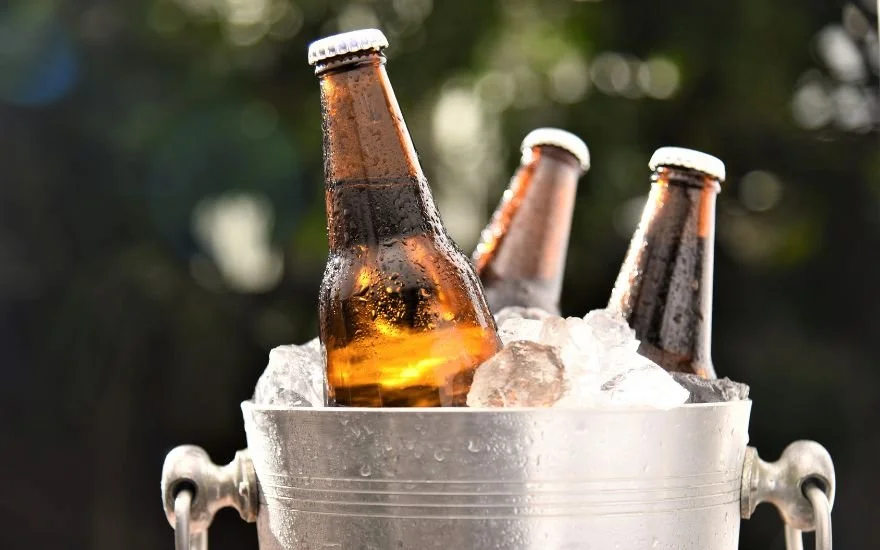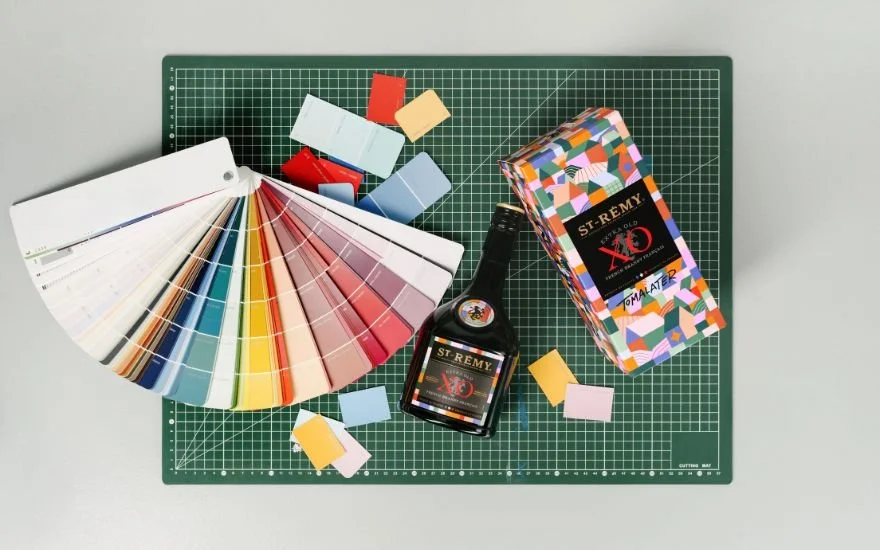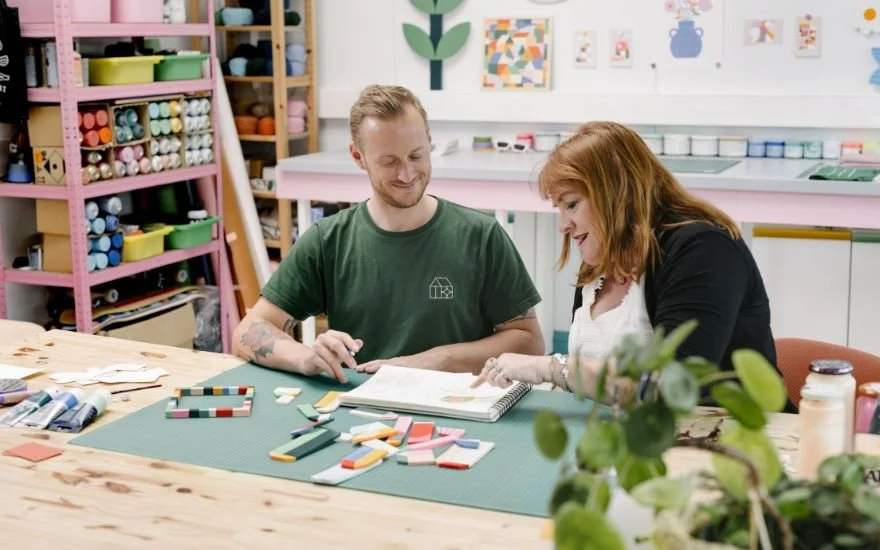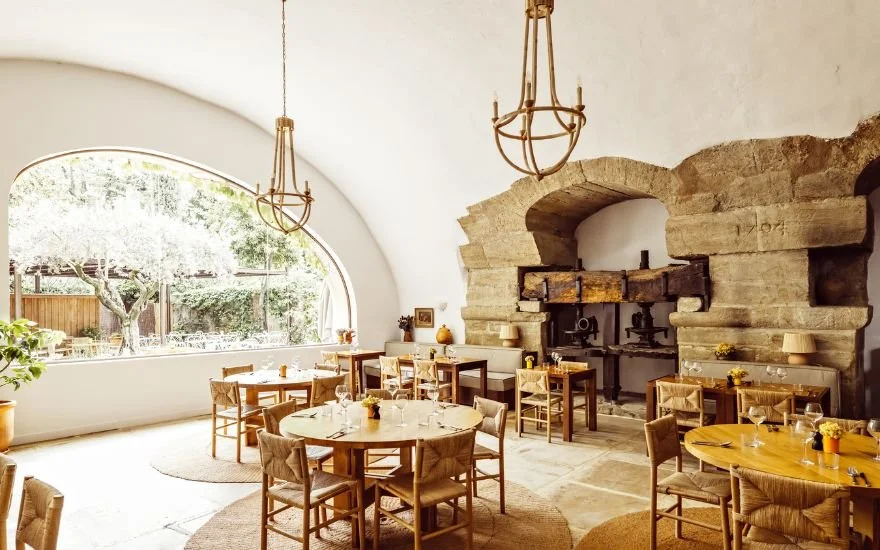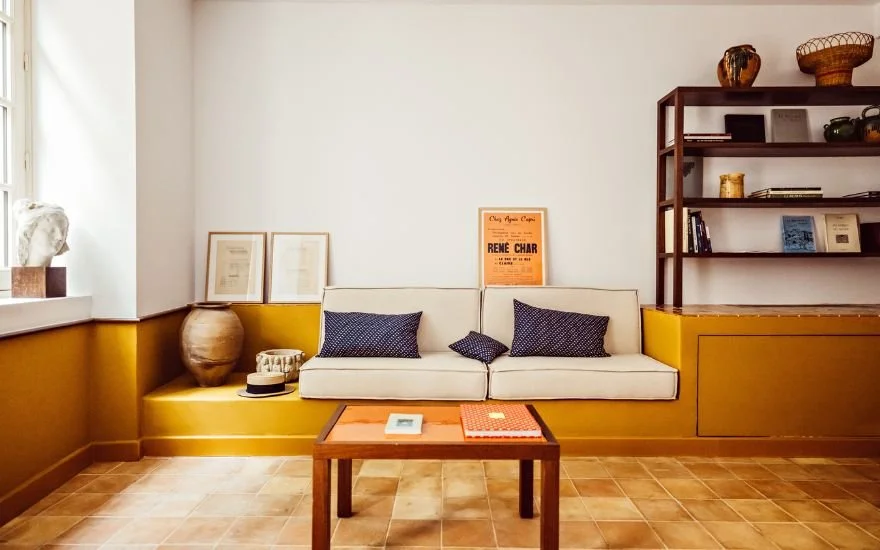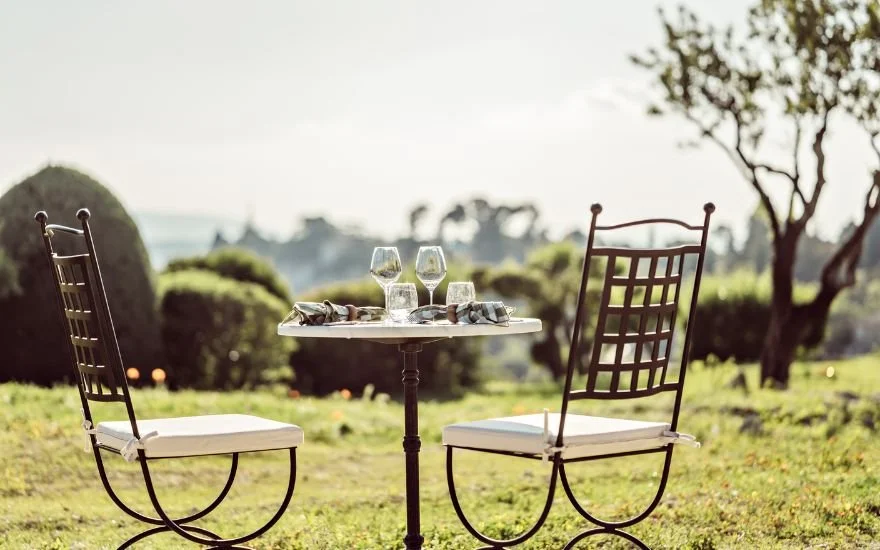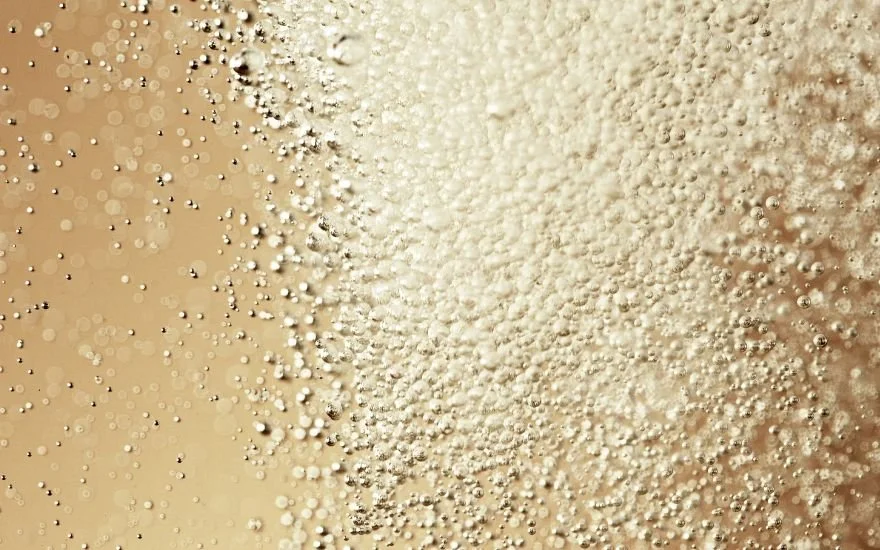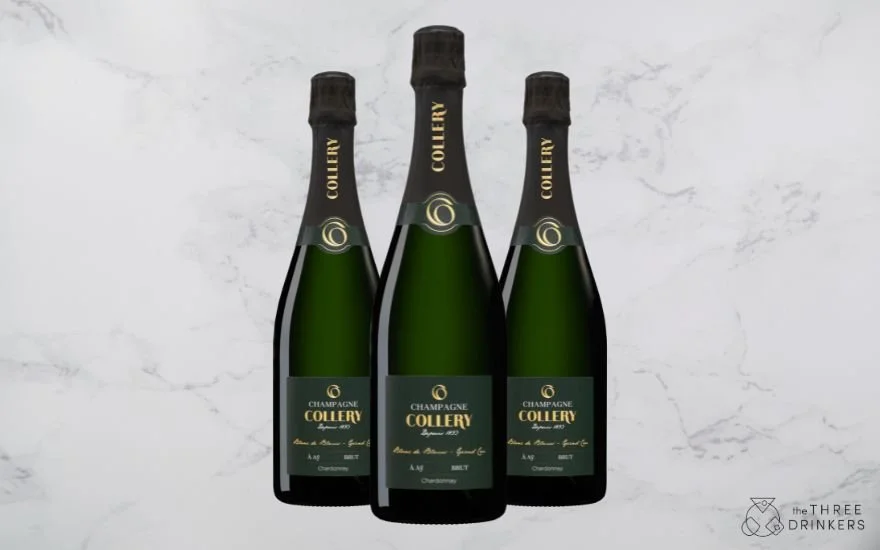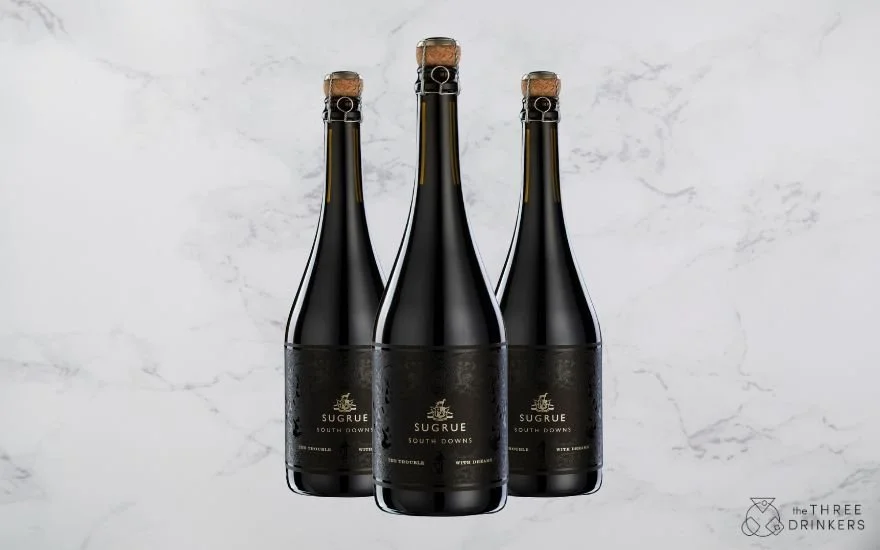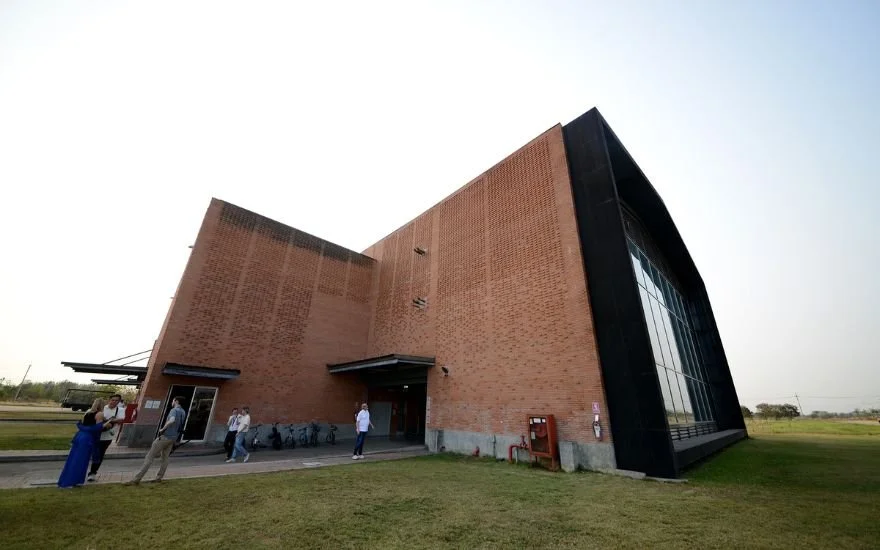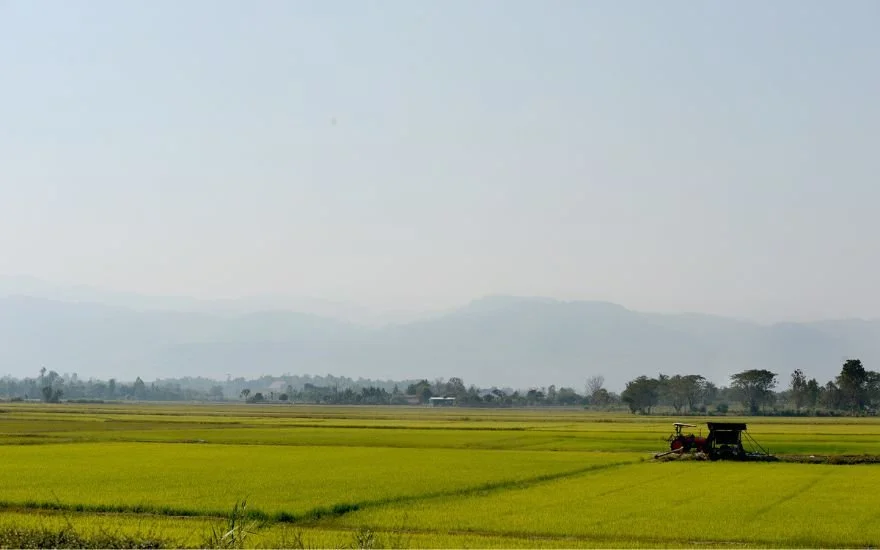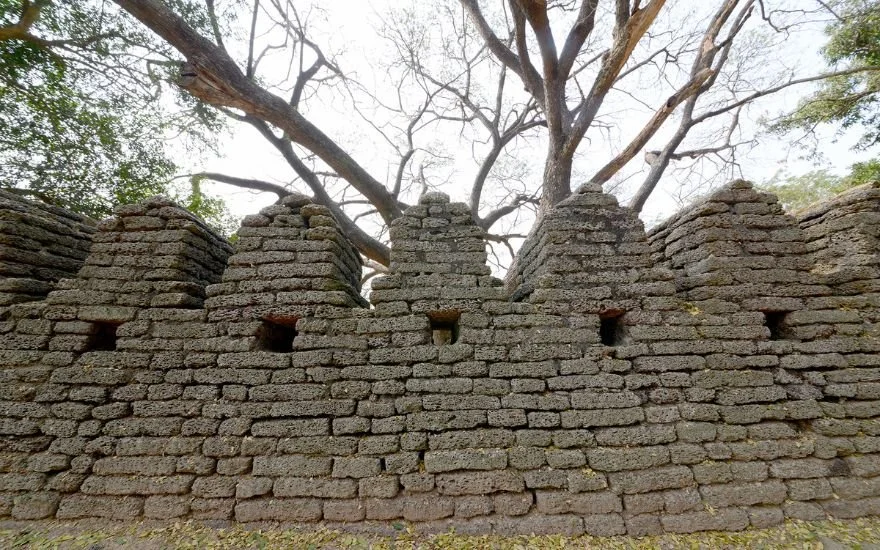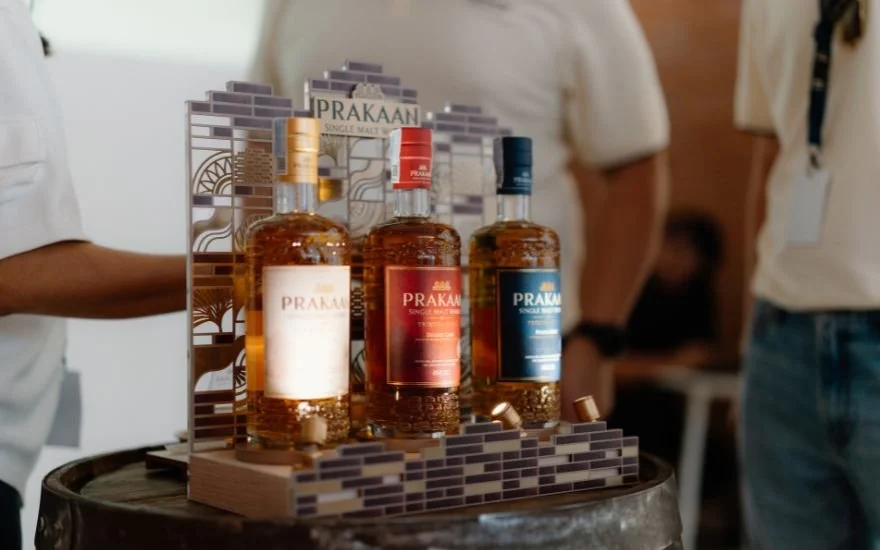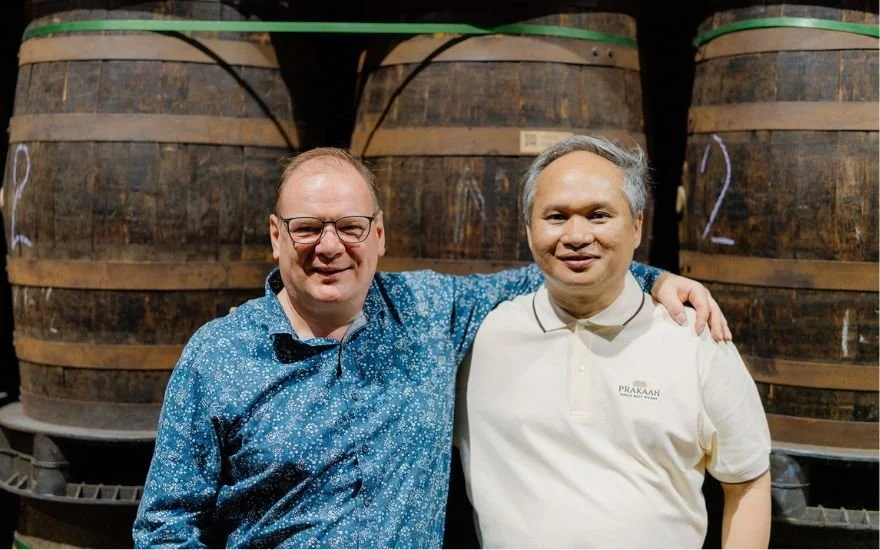Photo Credit: Arsen Fedosenko
What do you know about Ukrainian wine? If I had to guess, probably not much. Unless you’re in the industry, it tends to fly under the radar. But it shouldn't. Ukrainian Riesling won the Grand Prix at the very first Paris Wine Expo in 1900. And that was just the beginning. In 2025, Ukrainian wines brought home four gold medals at the Decanter World Wine Awards.
At the Villa d'Este Wine Symposium on Lake Como, a blind tasting panel – including none other than the co-owner of Domaine de la Romanée-Conti and the then head winemaker at Dom Pérignon – placed a Cabernet Sauvignon from Ukrainian producer Shabo ahead of bottles from Bordeaux icons Château Haut-Brion and Château Margaux. So yes, there’s definitely something going on here.
What are Ukraine’s Ancient Wine Roots?
Photo Credit: Arsen Fedosenko
Winemaking likely arrived in what is now Ukraine even before the Greeks did. Archaeologists in Crimea have found Vitis vinifera seeds, the kind used for making wine, dating back to the 8th century BCE. (And in case you didn’t know: the grapes we drink and the grapes we eat are not the same species.)
By the 1st century BCE, wine was being made in what is now western Ukraine, and Roman poet Ovid name-checked wines from the Black Sea region. In the Middle Ages, winemaking flourished in Kyiv’s monasteries before expanding west toward Lviv and east into the steppes. Ukrainian Cossack leaders – hetmans – were known to enjoy a good bottle. Mazepa, a baroque-era hetman whose sabre is on display at the Tower of London this summer, had an enviable wine cellar. His successor, Kyrylo Rozumovsky, imported over 30,000 vine cuttings in an effort to establish a large-scale vineyard.
By the 19th century, Ukraine was very much part of Europe’s wine boom. Local wine cellars (then also a term for wine bars) were praised by the likes of Mark Twain and Honoré de Balzac. At the first Paris World Expo, Ukrainian wines won the Grand Prix and several gold medals.
Soviet Setbacks and a Winemaking Revival
Then came the Soviet regime. The 1930s Holodomor (Stalin’s man-made famine) devastated rural life and wiped out much of the viticultural landscape. The repression of experts followed, and then Gorbachev’s anti-alcohol campaign in the 1980s brought another blow: mass destruction of vineyards and near extinction of many indigenous grape varieties.
Things started to change after independence in 1991. Ukrainian winemakers began investing in quality production. A 2018 law legalising small-scale winemaking was a turning point, unleashing a wave of independent producers, wine bars, and festivals.
What Makes Ukrainian Wine Unique?
Photo Credit: Arsen Fedosenko
Today, Ukraine’s wine scene is rich and varied – with family estates, urban wineries, organic farms, and a thriving spirit of experimentation. Consultants from Burgundy and Bordeaux lend expertise. Growers are exploring amphora ageing, pét-nats, skin-contact whites, and frost-resistant PIWI varieties. Climate change has shifted vineyard zones northward, and Ukrainian wines are earning praise from critics like Jancis Robinson and Oz Clarke.
You’ll find familiar grapes like Chardonnay, Riesling, Pinot Noir, Cabernet Sauvignon, Merlot, and less common varieties like Saperavi, Pinotage, and Albariño. Aligoté, the high-acid darling of Burgundy, known for its notes of lime and fennel, grows beautifully here. Indigenous grapes and local crossings include Telti-Kuruk, Sukholimansky White, and Odesa Black. Others, sadly, remain in Crimea, annexed by Russia in 2014.
In Zakarpattia, western Ukraine, Hungarian and Austrian influences are noticeable, though the region has its own unmistakable voice. They make everything from herbal-infused wines to ice wines and luscious dessert bottles – an echo of the area’s rich tea and foraging culture.
The full-scale Russian invasion in 2022 was catastrophic. Many wineries and vineyards were shelled, looted, mined, or occupied. The historic Prince Trubetskoi winery (a Grand Prix winner in Paris in 1900) was destroyed. So was the Hostomel glass factory, leaving many producers without bottles. Many winemakers and wine professionals joined the army or focused on volunteer work to support Ukraine’s defence.
And yet, even during shelling, blackouts, and active combat, Ukrainian winemakers harvested and bottled the 2022 vintage. It’s become a symbol of resilience. Despite everything, Ukrainian wines are now exported to over 20 countries. They’re made under unimaginable conditions, but they are still being made.
This entire industry runs on passion, grit, and the unwavering determination to show the world what Ukrainian wine can do. And the world is taking notice. In 2024, six Masters of Wine from different countries gathered to blind-taste nearly 100 Ukrainian wines and choose the ones with the most potential and international appeal.
Their final verdict was a curated list of 24 wines that speak to Ukraine’s winemaking present and future - four of which we’ll highlight below.
So where should you start? Last Christmas, Wines of Ukraine launched a campaign called Just One Bottle, encouraging people to try just a single Ukrainian wine. The message still holds. Pick one. That might be all it takes to keep going.
Villa Tinta Sukholimansky White 2024
Top 12 Ukrainian Wines of 2024
You may not have heard much about Bessarabia, the southern Ukrainian region, nestled near Moldova, but your glass is about to change that. The family-run Villa Tinta winery sits on the shores of Lake Yalpuh, where vineyards soak up sun, sea breezes, and Danube air. The estate bottles under a Protected Designation of Origin (PDO), meaning strict quality standards apply – and to make sure, they’ve got their own certified lab right on-site.
This wine is made from Sukholimansky White – a Ukrainian-born grape sometimes called Odesa White. It’s a 20th-century crossing of Chardonnay and the Moldovan variety Plavai, created by local viticulturalists. While it’s often used for skin-contact (aka orange) wines thanks to its generous body, here it’s all fresh, floral elegance.
The nose is pure summer: ripe pear, wildflowers, honey. The palate opens with grapefruit, white peach, a sprig of mint, and a delicate hint of sea air. Start solo, then experiment – it pairs beautifully with buffalo mozzarella bruschetta, delicate white fish, or even artichokes (no easy feat).
Size: 750ml
ABV: 11.5%
Find here: £14.80 (Ukrainian Wine Company)
Beykush Artania Rosé 2022
This one comes with a backstory worthy of its own docuseries. Beykush Winery began when its founder set out to build a countryside summer house with a wine cellar and got unexpectedly distracted by the grapes instead. Fast forward a decade, and it's now one of Ukraine’s most daring and dynamic producers, winning international awards and earning praise for its unconventional and fearless style.
The vineyards perch on Cape Beykush, a high point above sea level flanked by water on three sides. The terroir is wild, sea-kissed and dramatic – and the wines reflect that energy. Despite being within striking distance of the frontlines, the team presses on, crafting wines that are impossible to replicate anywhere else.
Their rosé is made from Pinot Gris with a dash of Pinot Noir and aged on lees for five months. On the nose: raspberry, juicy watermelon, and wild herbs. On the palate: zingy gooseberry, redcurrants, and a salty sea note that lingers just long enough to make you want another sip.
Pair it with grilled seafood, goat’s cheese, tuna steak, or even roasted pork. It’s confident, characterful, and unapologetically moreish.
Size: 750ml
ABV: 13%
Find here: £18 (Ukrainian Wine Company)
Villa Tinta Odesa Black 2022
Top 24 Ukrainian Wines of 2024
Now for something bold. Odesa Black (aka Alibernet) was born in the 20th century at the Tairov Institute in Odesa – a hybrid of Cabernet Sauvignon and Alicante Bouschet. Originally used for blending, it’s now stepping into the spotlight on its own terms.
And in this solo from Villa Tinta, it absolutely delivers. Aged in bottle and poured deep purple-black (you'd better not spill this on your sofa), it opens with a wild mix of blackberries, aronia, fig, earthiness, and even beetroot and prunes. There’s something unmistakably Ukrainian in its character, like a nod to the country's UNESCO-listed national dish: borshch.
Yet another surprise is in the taste. Despite its power and depth, the texture is velvety, the alcohol restrained, and when lightly chilled (around 14°C), it’s more versatile than you’d think. Try it with duck and prunes, smoky grilled meats – or yes, even a hearty bowl of borshch.
Size: 750ml
ABV: 13%
Find here: £14.80 (Ukrainian Wine Company)
Beykush Telti-Kuruk 2024
Top 12 Ukrainian Wines of 2024
Meet Telti-Kuruk – a grape with serious survival instincts. It arrived in southern Ukraine some 500 years ago during Ottoman rule, made it through the phylloxera plague, and is now having a well-deserved revival. Its name means “fox tail” in Turkish, a nod to the grape’s long clusters and the coppery tinge of its ripening berries.
The bird on the label isn’t just for decoration; Beykush Winery sits on Europe’s largest bird sanctuary. During harvest, flocks often help themselves to the vineyard’s best grapes. The winemakers joke that whichever variety the birds love most is the one they'll have the least of. Only 900 bottles of this vintage were made.
The wine itself is mineral, herbal, warm, and quietly complex. Think white mulberry, quince, kiwi, and wildflowers, with a vivid, layered finish: sea salt, honey, and a delicate bitter note of apricot pits. It also ages like a dream; we’d love to meet this one again in five years. Pair it with spaghetti alle vongole or roast Basque chicken with rosemary.
Size: 750ml
ABV: 13.5%
Find here: £27 (Ukrainian Wine Company)
Beykush Lerici Al Mar Nero 2022
Timorasso, the grape from Piedmont, was nearly extinct by the 1980s until Walter Massa, a maverick winemaker and visionary, brought it back. Thanks to Massa and Beykush’s winemaking consultant, Bisso Atanassov, 1,000 Timorasso vines made it from Italy to Ukraine – the grape’s first European debut outside its homeland.
Tricky to grow, Timorasso demands special treatment. But Beykush likes a challenge. At a 2023 tasting in Portofino, wine experts from across Europe singled out Beykush’s Timorasso - some even named Lerici their favourite of the event.
Now grown near the Black Sea, Timorasso reveals a new side of itself. This vintage – winner of a 2025 Decanter Bronze – is spice-laced and generous. On the nose: dried flowers, honey, and some warm baking spices. On the palate: juicy pears and golden plums, with a silky, rounded finish where vanilla and caramel sneak in (courtesy of ageing on lees in used French oak). Definitely age-worthy, it’s drawing comparisons to Chablis and Riesling.
Serve with grilled fish, creamy risotto, or anything that says "dinner with intention."
Size: 750ml
ABV: 12.5%
Find here: £39 (Ukrainian Wine Company)
Kolonist Bisser Brut
Top 12 Ukrainian Wines of 2024
Founded in the early 2000s by Ivan Plachkov – a descendant of Bulgarian settlers – Kolonist Winery is nestled in the Bessarabia region. This family estate has long focused on quality, and even wine legend Oz Clarke called their work a sign that this region would soon earn its rightful spot on the global wine map.
Since Russia’s full-scale invasion, the Plachkov family has hosted evacuees from occupied areas, and one of the winery’s co-owners now serves in Ukraine’s Armed Forces. Through it all, they’ve continued making standout wines – including red blends that can hold their own next to Bordeaux’s best.
Their vineyards share a latitude with Bordeaux and Piedmont, and thanks to south-facing slopes and sunlight bouncing off Lake Yalpuh, the grapes here achieve full, balanced ripeness.
Their Bisser Brut is made from Chardonnay using the traditional method (yes, the same process as Champagne) and aged on lees for three years. It’s clean and elegant, with aromas of pancakes and lemon, white flowers, and hazelnuts. On the palate, you’ll find crisp green apple, tangerine, and a creamy texture with a rich, lingering finish.
Pair with local-style lightly salted Dunaika herring if you can find it. Otherwise, go for smoked salmon or buttery toast with caviar.
Size: 750ml
ABV: 12%
Find here: £35 (Cellar Door Wines)
Want to Learn More About Ukrainian Wine History?
Before we wrap: if you’re curious about the deeper story behind Ukrainian wine and want to bust a few Soviet-era myths along the way, this book is essential reading: 29 Centuries: Rediscovered History of Wine in Ukraine by Anna Eugenia Yanchenko.
Written by a graduate in cultural studies, sommelier, and wine educator, 29 Centuries digs through 800 historical sources to uncover Ukraine’s true winemaking past – the one erased for decades by Soviet propaganda. "We used to think there was a void in our history where wine culture should be,” she says. “But it wasn’t void. It was oblivion.”
The result is a deeply researched, engaging read with original illustrations (some in graphic novel style) and commentary from historical figures including Homer, Pliny the Elder, and Mark Twain. The book won a 2024 award from the International Organisation of Vine and Wine and is now available in Ukrainian and English.
Ukrainian wines tell a story of place, passion, and resilience. And if this tasting has you thinking about what other bottles are worth discovering, take a look at our Champagne picks here – whether you're after the classic, the quirky, or something that simply feels like a celebration.




















